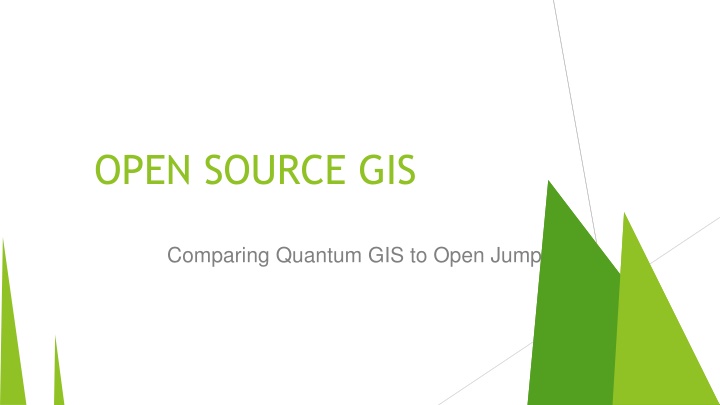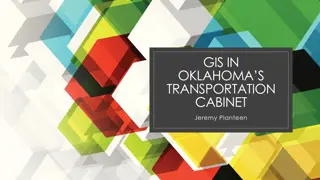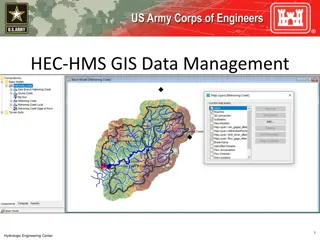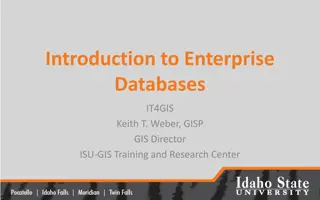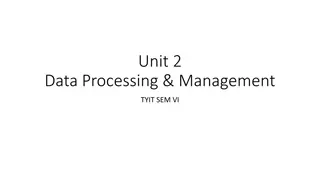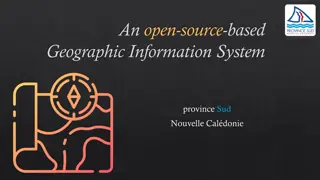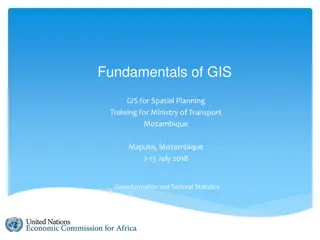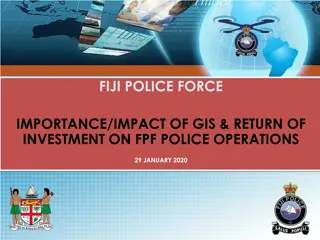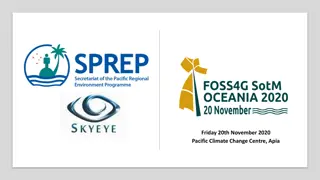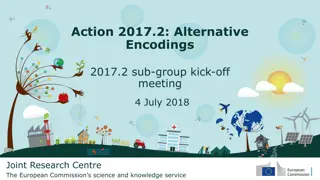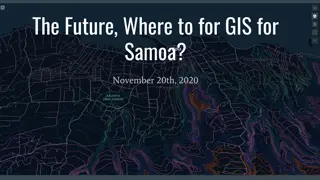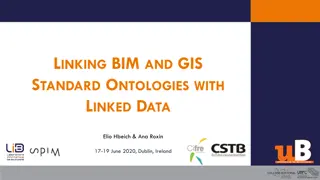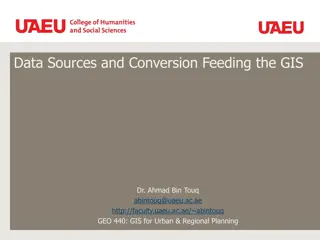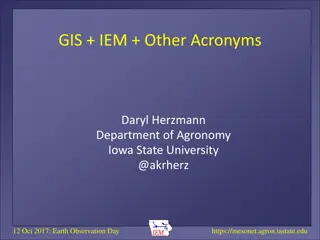OPEN SOURCE GIS
A detailed comparison between Quantum GIS (QGIS) and Open Jump in terms of history, development, functionality, data formats, editing tools, and cartography. Explore the differences and similarities in features and capabilities of these two open-source GIS platforms.
Download Presentation

Please find below an Image/Link to download the presentation.
The content on the website is provided AS IS for your information and personal use only. It may not be sold, licensed, or shared on other websites without obtaining consent from the author.If you encounter any issues during the download, it is possible that the publisher has removed the file from their server.
You are allowed to download the files provided on this website for personal or commercial use, subject to the condition that they are used lawfully. All files are the property of their respective owners.
The content on the website is provided AS IS for your information and personal use only. It may not be sold, licensed, or shared on other websites without obtaining consent from the author.
E N D
Presentation Transcript
OPEN SOURCE GIS Comparing Quantum GIS to Open Jump
Brief History QGIS JUMP Development began by Gary Sherman in 2002 Developed in C++ by group of volunteers. Became an incubator project For Open Source Geospatial Foundation in 2007 Intent was to be a cross platform open GIS project. Developed by Vivid Solutions in 2002 Purpose was to conflate road and river datasets from different digital maps into a single dataset Development continued after project was finished and an user community was formed: the JPP Development Committee The name was then changed to Open Jump
Personal Experience Early on JUMP was more developed Better cartography Better editing tools Faster Now QGIS has far surpassed JUMP for functionality Added more cartography tools Functionality now rivals commercial GIS JUMP is more stand alone QGIS integrates with other Open Source programs Map Server GRASS
Data Formats QGIS JUMP Vector Natively prefers PostGIS Also supports Databases that support spatial (Oracle, SQL) Shapefiles Raster Standard: TIFF, JPEG, BMP, etc Compressed: ECW and MrSID (if you install all the components) CAD in DXF format GPS in GQX format Vector Natively prefers GML Supports spatial databases (SQL, Oracle) Supports Shapefiles and SDE Raster Standard: TIFF, JPEG, BMP Compressed: ECW (MrSID no longer supported) CAD in DWG format No GPS support
Editing JUMP Variety of tools to create points, lines and polygons Multiple snapping tools Polygon tools to ensure clean topology Has QA / QC tools to test geometry Editing stable and responsive
Editing Continued... QGIS Variety of tools to create points, lines and polygons Multiple snapping tools Polygon tools to ensure clean topology Has QA / QC tools to test geometry Editing not as responsive
Cartography JUMP QGIS Symbology Supports line width, Different line styles, Transparency, custom colors Lack complex line symbols (double lines) Labels Good label placement engine Supports advanced labeling (follow the line) Map Composition Supports basic elements (Title, North Arrow, Scale Bar) Exports to PDF and SVG Symbology Supports line width, Different line styles, Transparency, custom colors Supports Complex Line Styles Labels Good label placement engine Advanced labels surpasses JUMP Map Composition Supports all the elements JUMP supports and more Exports to PDF and SVG
Conclusion JUMP is a simple, easy to learn GIS program QGIS is more complete function rich Open JUMP: http://OpenJUMP.org QGIS: http://QGIS.org
